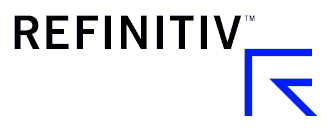
Jon Williams, head of fixed income, Refinitiv
A new Refinitiv report, produced in collaboration with Greenwich Associates, entitled Defining Fixed Income Data – The Value of Centralising and Normalising, takes an in-depth look at the explosion of available market data in the fixed income space and tackles the challenges associated with accessing relevant, quality data that can empower traders to identify the right trading opportunities with speed and precision.
The fixed income market is witnessing an explosion of market data, which presents both benefits and challenges. With this plethora of available information, traders are faced with the task of forming a truly holistic view of available opportunities, and must do so with speed and accuracy.
Refinitiv’s extensive and often exclusive partnerships with best in class providers mean that we can deliver holistic, complete and flexible data from multiple sources – all in a single solution – to optimise efficiency.
The data explosion
The fixed income market, much like the equities market, is witnessing an explosion of market data, driven by new technology, legislation and the rise of electronic trading.
This burgeoning availability of data and information brings many benefits, including increased price transparency, amplified by the implementation of MiFID II. Instead of only indicative bids, true bids or live prices are now the norm when trading bonds.
This changing landscape, however, also presents a unique set of challenges as fixed income traders must determine how best to harness this plethora of available information to pinpoint when and what to trade, optimise their strategies, and boost their performance.
The complexity of data
The fixed income market remains characterised by complexity. Not only does it comprise a diverse amalgamation of securities and asset types, but the proliferation of data means that pinpointing and accessing the most relevant data sets has become highly complex for a number of reasons.
Firstly, data types are numerous – including, for example, real-time pre- and post-trade data, historical data, risk related data, reference data and more – but moreover, data sources tend to be fragmented.
This means that, even for a single security type, market participants must very often engage several data providers, multiple trading platforms, and different regulatory bodies in order to form a truly holistic view.
Don’t be left behind
It is also worth remembering that the overarching goal of optimising alpha is unlikely to be achieved if only basic fixed income trading data is being accessed: to remain on the cutting edge, traders must ensure that they take full advantage of new data sources, however daunting, as this will enable them to continue refining and perfecting their investment and execution strategies.
If they are to succeed in this changing data landscape, however, it is crucial that the process of collecting and aggregating this data is simplified and streamlined. Execution management systems (EMS), and third-party data and analytics platforms are able to aggregate pre- and post-trade data, but in the absence of data sharing, forming a truly holistic view remains an elusive goal.
Creating real-world solutions
Refinitiv’s open technology platform, Eikon, now has access to US Investment Grade and High Yield data from MarketAxess and Tradeweb/Dealerweb data, and enables multiple data sources to be aggregated and analysed in a single solutions for the benefit of portfolio managers and traders on both the buy- and sell-side.
We remain committed to the open sharing of quality data, and our extensive and often exclusive partnerships with best in class providers mean that we are able to offer flexible and complete solutions, while continuing to support the fixed income market’s transformation to the benefit of all stakeholders.
